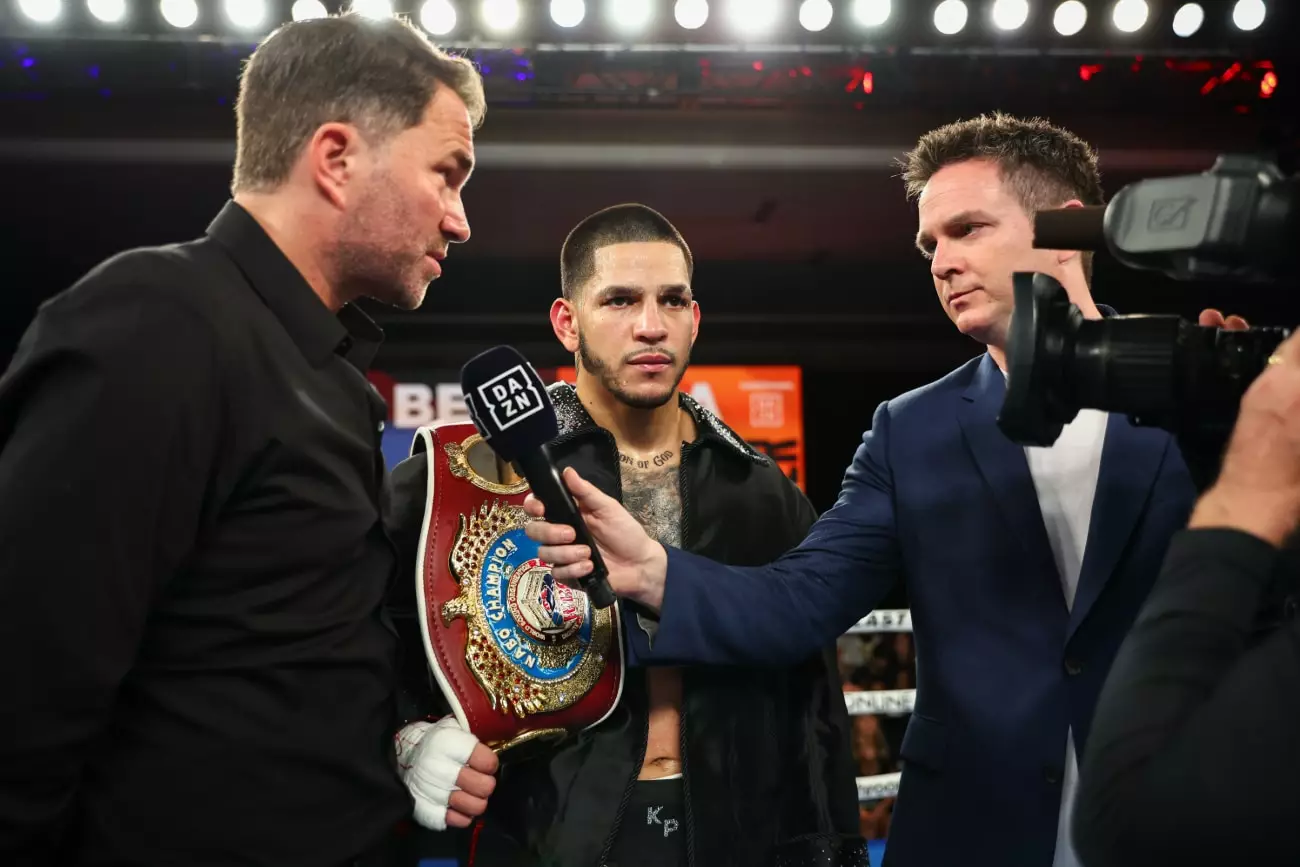In a sport as fiercely competitive as boxing, ambition can be both a driving force and a double-edged sword. Edgar Berlanga, a fighter who made headlines for his explosive style and knockout power, is now mapping out a bold trajectory aimed at reclaiming his spot among the elite. Berlanga (23-1, 18 KOs) has set his sights on three specific names—Jaime Munguia, Jermall Charlo, and Caleb Plant—as stepping stones to a potential rematch with the sport’s titan, Canelo Alvarez. Each matchup not just represents a challenge but also an opportunity to redefine his career, particularly in light of his previous defeat at the hands of Canelo.
Berlanga’s ambition is manifest in his assertion that consecutive victories against these notable opponents will catch Canelo’s attention, reigniting the possibility of another showdown. While it’s undeniably courageous for Berlanga to eye such high-stakes encounters, it warrants scrutiny as his strategy stands on the razor’s edge of practicality and ambition.
The Three Names That Could Shape His Future
Berlanga’s chosen adversaries reveal much about his ambition and the outlook for his career. Munguia, once a rising star but recently setback by a loss to Bruno Surace, presents an avenue to prove his mettle. However, having historically struggled against elite competition, the matchup raises questions about how much Berlanga can gain from a victory over someone who is grappling with his own consistency.
On the other hand, Jermall Charlo hasn’t fought in over two years. At a critical juncture in his career, his inactivity could pose significant risks. Turning thirty-five in May, he risks becoming more of a name rather than a challenge, potentially diluting Berlanga’s claimed achievements. As for Caleb Plant, although he is a larger fighter, scrutiny arises regarding his competitive viability since losing to David Benavidez. Berlanga might be targeting these names, but one must wonder whether they represent genuine challenges or merely tarnished reputations.
Weight Issues and Efficiency in the Ring
A significant aspect of Berlanga’s challenge is his physical conditioning. It’s becoming increasingly apparent that he has been teetering between weight classes. His recent bout saw him appear considerably heavier than his specified weight, inviting questions about his dedication and ability to contend at super middleweight. His alarming weights, such as coming in at nearly 170 pounds for his fight against Gonzalez-Ortiz, suggest an impending identity crisis in terms of his fighting weight. If Berlanga intends to topple these three opponents and eventually vie for redemption against Canelo, he must first grapple with his own weight issues or risk becoming a cautionary tale.
The gravity of these challenges raises critical questions about the integrity and effectiveness of his training regimen. If he hopes to stand a chance against top-tier opponents like Plant and Munguia, addressing these health concerns is paramount. Failing to do so could mean running afoul of the very ambitions he seeks to fulfill.
Negotiations and Long-term Vision
Berlanga’s pursuit of big-name fights extends beyond the ring; he’s eyeing negotiations and collaborations with promotional bodies rather than relying on conventional channels. His desire to go “straight to the source” to create the “biggest fights” in the coming years speaks volumes about his ambition, but it also raises skepticism. The boxing industry is notorious for its complex and often convoluted promotional entanglements. Can Berlanga realistically navigate this labyrinth without the backing of seasoned promoters? His aspirations seem grandiose, yet the journey may be more arduous than anticipated.
His comments outlining years 2025 to 2029 as prime for instilling his legacy show a level of foresight that is commendable. However, the question remains: can he truly build upon his legacy if he does not earn wins against fighters who are active and at the top of their game?
Psychological Warfare and Competitive Pressure
When Berlanga discusses “smashing” his future opponents, he invokes a kind of psychological warfare that is as much part of boxing as the physical contest itself. However, does such bravado translate into success in the ring? Anticipating a rematch with Canelo is bold and perhaps delusional without having faced and defeated competitive fighters first. The specter of his previous encounter, where he claims to have fought through injury and at only 50% capacity, casts a long shadow over his assertions.
With each forward step in his quest for redemption, Berlanga must contend with not only external challenges but internal fears and expectations. The pressure to perform at an elite level while tackling past failures looms large. A failure to deliver could mean faltering in his ambitions for greatness, thereby solidifying the narrative that Berlanga is more talk than triumph.
Edgar Berlanga stands at a pivotal juncture in his boxing career. With ambition driving him forward, he must convert that energy into solid performance and proactive measures to navigate a sport that is as unforgiving as it is rewarding. The stakes are high, and the path uncertain—but perhaps that volatility is where true talent reveals itself.


Leave a Reply